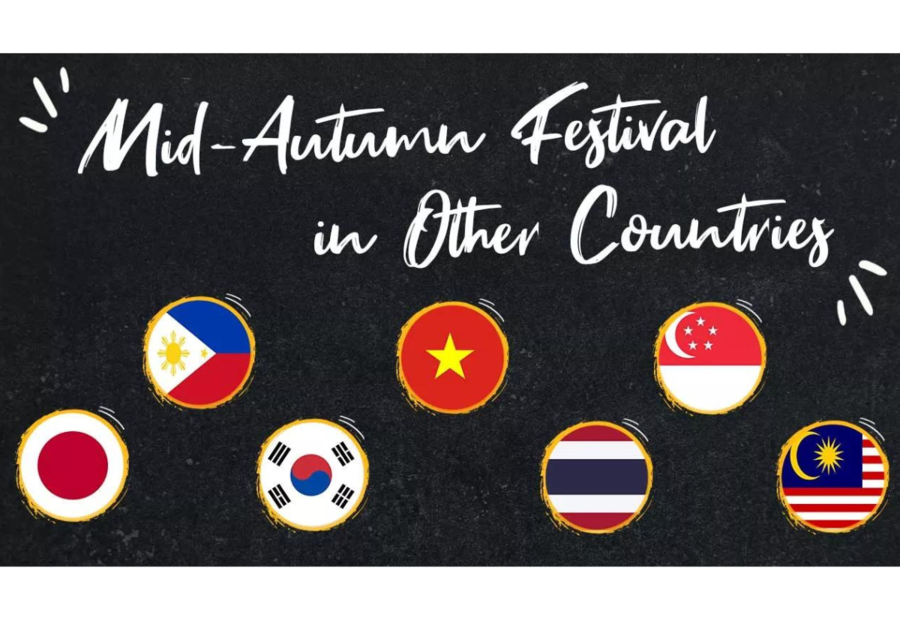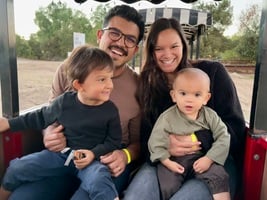The Mid-Autumn Festival is observed by millions of people across East Asia on the 15th day of the eighth month of the lunar calendar. This means the festival date changes every year in the Gregorian calendar, but it is always around the time of the harvest moon. This year, the Mid-Autumn Festival falls on Sept. 29.
To celebrate this holiday, families and friends gather to revel in festivities like feasting on mooncakes, playing with lanterns, and moon gazing. Read up and get acquainted with the holiday.
China
How the Festival Started - Long ago, the sky held 10 suns which were scorching the earth. A brave and noble archer named Hou Yi saved his people by shooting down 9 of the 10 suns. As a reward, he was given an elixir that would make him immortal. However, Yi did not want to leave his beloved wife, Chang’e, so he gave her the elixir for safekeeping. But Yi’s jealous apprentice, Peng Meng, learned of the elixir. He waited until Yi was away on a hunting trip, then tried to force Chang’e to give him the elixir. Chang’e refused and, desperate to keep the elixir away from Peng Meng, drank it herself. Now immortal, Chang’e began to rise in the sky. She wanted to stay as close as possible to her husband, so she made her new home on the moon with her pet, the jade rabbit. When Yi returned home and discovered what had happened, he was heartbroken. He went outside where he could see the moon and offered the fruits and cakes that Chang’e loved to her. Others learned what had happened and began making offerings to Chang’e as well.
From those mythological beginnings, the Mid-Autumn Festival grew over the years to become the important celebration it is today (you can read more here)
While the festival was originally a time to enjoy the successful reaping of rice and wheat, with food offerings made in honour of the moon, today it’s an occasion for families to come together, eat mooncakes, light lanterns, and in general have a jolly good time of it.
In Chinese tradition, the full moon symbolizes family reunion, thus Mid-Autumn is a festival to be celebrated at home. People admire the moon and eat moon cakes, which come stuffed with a variety of fillings, from the traditional salted egg yolk and lotus paste to contemporary versions with ice-cream, fruit, and custard fillings. Other foods eaten during the festival include taro (because its name in many Chinese dialects is a homonym for “good fortune comes”) and hairy crab, a seasonal delicacy.
South Korea
South Koreans celebrate Chuseok, also known as hangawi (it’s one of the country’s biggest and most important holidays). Many go back to their hometowns to celebrate with big family reunions and hold memorial services, called charye, for their ancestors. The day before and after are also public holidays in South Korea, which allows people time to travel home. At festive gatherings, Koreans eat songpyeon, a half-moon-shaped rice cake filled with a semi-sweet stuffing, as well as seasonal fruits and vegetables such as persimmons and chestnuts. They also enjoy a host of entertainment, including the ganggangsullae, a traditional circle dance. And of course, come nighttime, people head out to admire the full moon where they look out for the moon rabbit, or daltokki. The creature is said to be visible on the lunar surface, busy making rice cakes.
Japan
The Japanese celebrate Tsukimi, which translates to “looking at the moon.” Like the Koreans, they try to spot the moon rabbit, called tsuki no usagi in Japanese, as the animal goes about its festive task of making the rice cakes known as mochi.
The festivities are said to date back to Japan’s Nara period. In the following Heian era, Tsukimi was popular among aristocrats. Moon viewing parties, frequently held on boats, included drinking, listening to music and composing poetry. By the Edo period, the tradition was being widely enjoyed by the public.
Traditionally, tsukimi is marked by adorning the home with pampas grass, to represent a bountiful harvest. Festive snacks include tsukimi-dango, a round rice dumpling symbolizing health and happiness, and seasonal produce like chestnuts and pumpkin. Eggs are also consumed, as their oval whiteness is felt to be suggestive of the full moon. Even fast food brands get in on the act, adding eggs to burgers.
Vietnam
The Mid-Autumn Festival in Vietnam is called Tet Trung Thu and is also known as Tet Thieu Nhi, or Children’s Festival. There’s a reason for that emphasis. In the old days, the Vietnamese believed that children had the closest connection to the sacred world and that being close to children was thus a way to connect with the gods. Even today, most Vietnamese festival traditions and events centre on or around children, from the giving of gifts (like those pictured) to the traditional dragon dances.
Families mark Tet Trung Thu by placing cakes and fruit trays, symbolizing filial piety, before ancestral altars in their homes. Moon cakes are also a staple in Vietnam, and come in two types: banh nuong (oven-baked) and banh deo (soft-crusted).
Singapore
Some three-quarters of Singaporeans are of Chinese descent, so many of the Mid-Autumn Festival customs and traditions from China are also observed in Singapore. Singaporeans celebrate the Mid-Autumn Festival with extravagant lantern displays held across the city-state in venues. The best places to enjoy the festival in Singapore are Chinatown, where you can sample mooncakes and fine teas at the street bazaars, watch nightly performances and peek at lantern-painting competitions, and also the city’s Chinese Garden. Moon gazing is still a big part of the festival, with the beach being a popular location for the activity.
Taiwan
The Taiwanese celebrate the Mid-Autumn Festival with a public holiday that is characterised by outdoor barbecues, which have become a way for friends and family to come together and gaze at the moon. Although this isn’t connected to any ancient tradition (except perhaps for the Taiwanese people’s love of barbecue!), Taipei City opens a number of riverside parks to accommodate such barbecues during the festival.
Malaysia
With a high Chinese population, the Mid-Autumn Festival in Malaysia is celebrated with great splendour. One can witness it all, from Lantern parades to opera performances to dragon and lion dances, especially in Kuala Lumpur. Like other countries, the people in Malaysia, too, gather with their families to admire the moon. A family dinner while eating mooncakes is a must during the Mid-Autumn Festival in Malaysia. The shops and streets are decorated with lanterns, and many organize lantern painting competitions. Dragon and Lion dances are a famous sight on the streets. Many people even visit the Thean Hou Temple in Kuala Lumpur, which looks spectacular with the lanterns lit around its six tiers. Penang Hill is another prominent location where a Night Lantern walk takes place.
Philippines
The Mid-Autumn Festival in the Philippines is a major holiday for the Chinese living in the Philippines. Apartments and buildings are covered in lanterns, and Chinatown in Manila is the best place. Bridges and shops are adorned with streamers. Parades are a major part of the festival, ranging from an ethnic clothing parade to a lantern parade to even a float parade. Over the years, people have become more creative and now make their lanterns using electronic devices. Many restaurants and hotels come up with special menus serving the festival’s favourites, especially mooncakes. Ducks, hairy crabs, and Pomelo are other food items that make it to the dining table. Families reunite to admire the moon and the beautiful lanterns and enjoy a large feast at the Mid-Autumn Festival in Philippines.
The people get together to play a dice (gambling) game called Pua Tiong Chiu or Poa̍h-Tiong-chhiu (which means “mid-autumn gambling” in Philippine Hokkien), and the winner generally gets mooncakes as their prize.
Differences In The Festivals:
Amongst the similarities, the festival is also known for its unique differences. Below are some ways it varies from country to country.
| Country | Name of Festival | No. of Days of Celebration | National Holiday | Origin |
| Japan | Tsukimi | 4 days | – | It is believed to have originated during the Heian period (794-1185AD) and was influenced by the Chinese Mid-Autumn Festival. Moon viewing is also considered to be a way of being grateful for a good harvest and wishing for similar fortune in the future. |
| South Korea | Chuseok | 3 days | 3-day Public Holiday | Chuseok is said to have originated from Gabae, which involved a weaving contest between two teams over a period of a month. The winning team would be the one which weaved more cloth. Some even say that Chuseok originated from the ancient worship of the moon during the harvest. |
| Vietnam | Tết Trung Thu | More of a children’s celebration for 1 to 3 days | – | Tết Trung Thu was influenced by China’s occupation of Vietnam. Celebrated at the end of the harvest, it is a big part of the Vietnamese culture now. |
| Thailand | 3 days | – | In Thailand, the festival emerged from the story of the Eight Immortals who visit the Moon Palace on this day and ask for prosperity and good luck for all the people on Earth by offering her peaches. | |
| Singapore | Moon Festival or Moon-Praying Festival or search MooncakeFestival | 2 days | – | Singapore has also been influenced by Chinese beliefs. Here, the festival originated from the story of Lady Chang’e, who drank the elixir of immortality to save their kingdom and hence flew to the moon.Other origin stories include the Chinese Emperors of the Zhou Dynasty (1047BC-770BC), who would worship the moon for a bountiful harvest. |
| Malaysia | Lantern Festival | 1 day | – | Like Singapore, the Malaysians also follow the story of Chang’e saving the people from her husband, Hou Yi, in comparison to the love story told by others. The Malaysian Chinese also say that the ancient Emperors would offer sacrifices to the moon to pray for a good crop. |
| Philippines | search MooncakeFestival | 2 day | – | In the Philippines, the Chinese tell the story of Chang’e stealing the elixir of immortality from her husband, where Hou Yi prepares mooncakes every year for her on the Mid-Autumn Festival Day.Other stories say that it originated with the Chinese using mooncakes to deliver messages as a part of the rebellion to overthrow the Yuan Dynasty (1279-1368), which started on the 15th day of the 8th month of the Lunar Calendar. |
Children’s Books About The Mid-Autumn Festival:
1. Thanking the Moon
For the youngest readers, Grace Lin’s Thanking the Moon offers the best introduction to the Mid-Autumn Festival. Using her trademark economy of words and whimsical illustrations, Lin manages to convey the holiday’s essence, as celebrated by a modern Chinese American family.
2. Mooncakes
Mooncakes by Loretta Seto returns to contemporary times while following a mother and father who explain the Mid-Autumn Festival’s ancient folklore to their daughter. It’s like Thanking the Moon for slightly older children who can understand the full scope of the holiday. This might be your family!
3. Lin Yi’s Lantern
Lin Yi’s Lantern by Brenda Williams is a great story for older toddlers, say 3+. The story is about Lin Yi, a boy in a small Chinese town who is sent to the market for Mid-Autumn Festival foods by his mother. Though he bargains hard to have enough money left to buy a red rabbit lantern, his best laid plans run off the tracks and he learns a valuable lesson in the process.
4. A Big Mooncake for Little Star
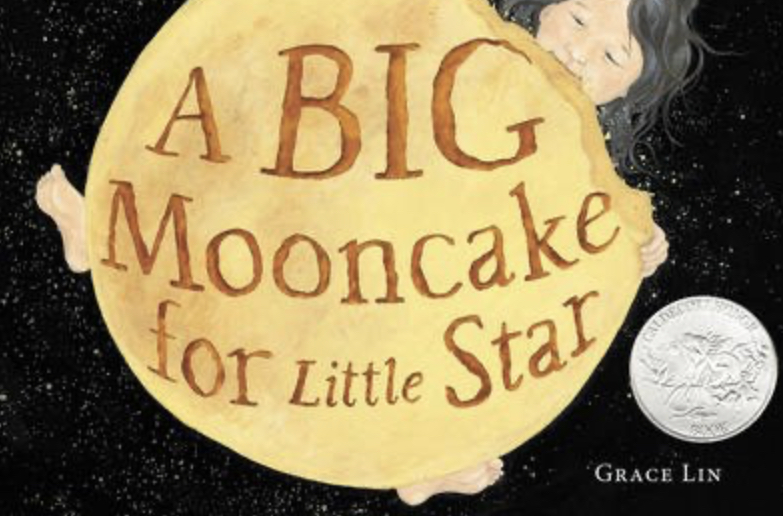
Also by Grace Lin, this Caldecott Honor Book is a much more abstract and whimsical tale that imagines the moon as a giant mooncake crafted by the stars. Little star and her mom try to make a GIANT mooncake but Little Star can’t help but nibble on the delicious pastry. With beautifully calming illustrations and a quiet story of love and family, this would make an excellent bedtime story.
5. Shadow in the Moon
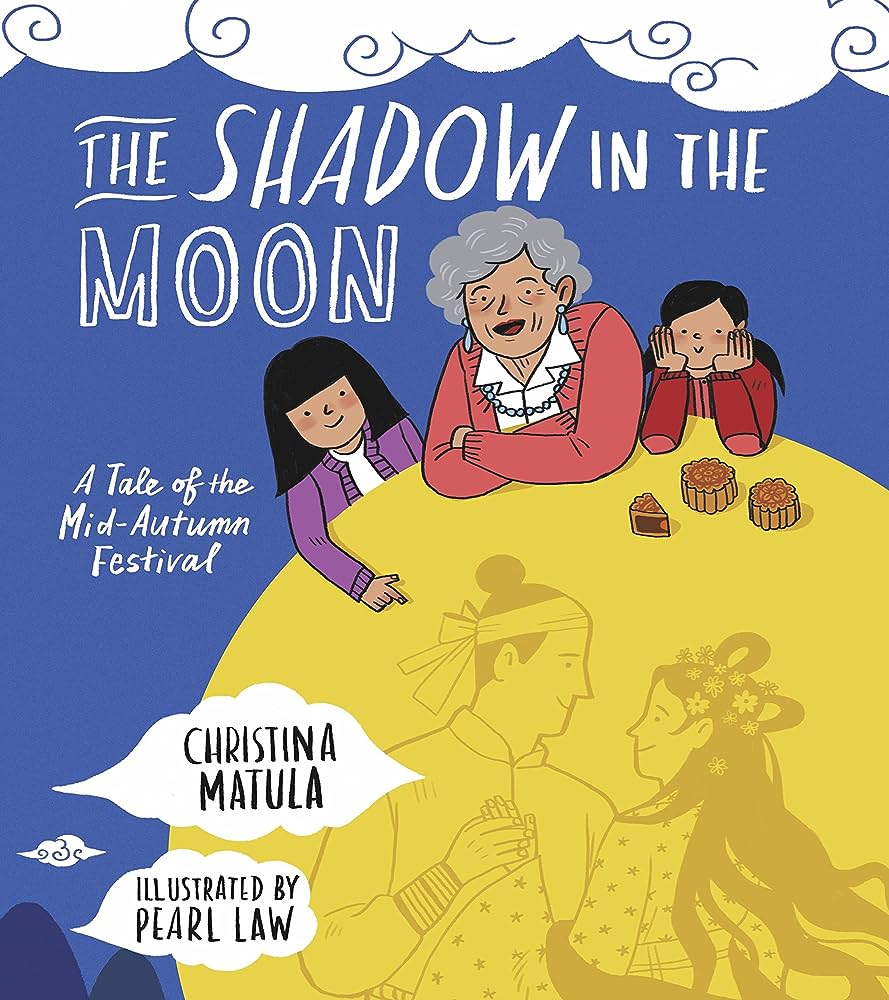
As with most mythology, there are so many different variations on each story. The story of Chang’e and Houyin is no different! This version of the story is a tragic love story torn apart by a thief trying to steal the elixir to eternal life. Plus the illustrations in this book really help bring the story to life!
6. Our Moon Festival
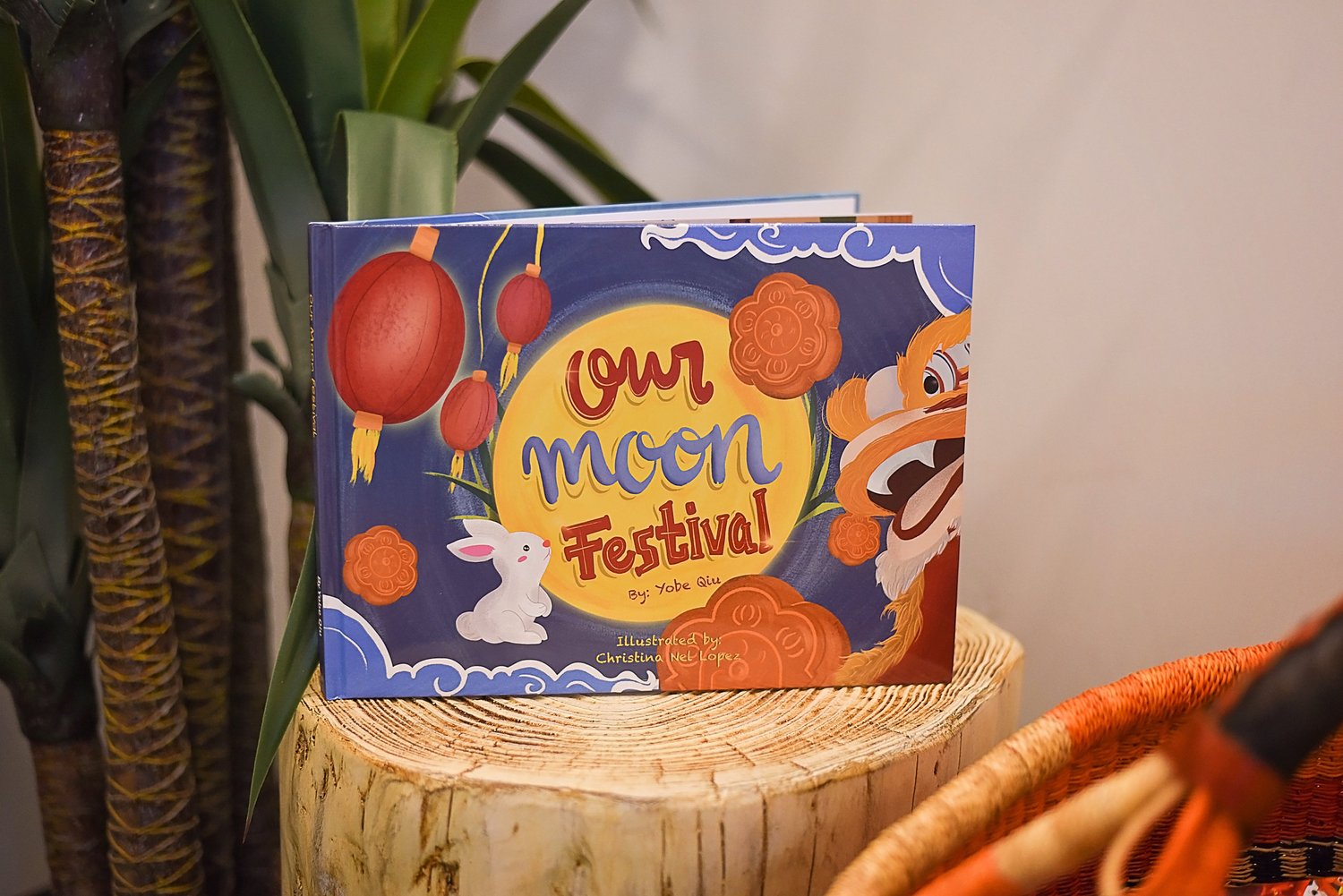
Although I celebrate the Mid-Autumn Festival as a Chinese American, the Moon Festival is a holiday celebrated across many different Asian cultures. This book shares the many different ways people from various countries celebrate the holiday from China to Singapore to Vietnam to Japan!
6 ways to celebrate the Mid-Autumn Festival:
Customs of the Mid-Autumn Festival in China focus on thanksgiving, praying, and family reunions:
1. Reuniting with Family
The Mid-Autumn Festival is a big day for family reunions. People will go back home and get together with their families. This tradition is much like Thanksgiving in the United States. People will share a fantastic meal together to enjoy this family reunion time.
2. Admiring the Full Moon
The full moon symbolizes a family reunion, reminding people of their hometowns and loved ones. After the family reunion dinner, people will go outdoors to admire the full moon on the night of the Mid-Autumn Festival.
3. Eating Moon Cakes
The Mid-Autumn Festival is also known as the Mooncake Festival. The cakes, typically round, symbolizing the full moon, are presented as gifts to relatives and friends. The moon cake is a must-eat food at the Mid-Autumn Festival.
Mooncake consumption 101: You shouldn't pick up a mooncake and take a bite out of it. That's rule number one. Mooncakes are meant for sharing. Instead of consuming one mooncake in full, cut each into sixths or eighths and enjoy the varying flavors of the different kinds of cakes. They're also great paired with a cup of tea. If you end up with leftover mooncake, wrap with plastic and cover or store in airtight containers at room temperature for up to a week. If you wish to keep them longer, store in the refrigerator.
4. Lighting and Hanging up Lanterns
Chinese people believe the higher the lanterns are hung, the luckier the family will be. Every Mid-Autumn Festival, lantern carnivals, and exhibitions will be hung in parks and other public places, during which lanterns of various colors, patterns, and styles are on display. The entire area is decorated with beautiful lighting.
5. Guessing Lantern Riddles
Besides hanging up lanterns outside, Chinese people usually write some interesting riddles on the lanterns and have other people try to guess the answers. Nowadays, some Chinatown or Southeast Asian countries would hold lantern riddle contests on Mid-Autumn night.
6. Worshiping the Moon
Chinese people believed the moon governed all vital changes, especially the harvest of grain. Therefore, people will put a table outside under the moon on the night of the Mid-Autumn Festival. Then burn incense, put moon cakes and fruits as sacrifices on the table, face the moon, and pray for fortune.
Where to Celebrate Mid-Autumn Festival locally:
1. Orange County
The annual free OC Moon festival celebration will take place on Sunday, October 1, 2023 on the Freedom Hall Lawn at Mile Square Park. This free, family-friendly festival will feature food vendors, face painting, balloon animals, live entertainment, children’s activities, and free moon cakes and lanterns for kids.
Where: Mile Square Regional Park | Freedom Hall Lawn
Address: 16801 Euclid Street Fountain Valley, CA 92708
Enter Mile Square Regional Park off of Edinger or Ward
Date: Sunday, October 1, 2023
Time: 5:00 pm – 8:00 pm
2. Irvine
The community is invited to celebrate the Mid-Autumn Festival — a one-thousand-year-old tradition. Explore unique cultural displays, live entertainment, crafts, specialty food trucks, and artistic demonstrations. Presented in partnership with South Coast Chinese Cultural Center. For more information, visit cityofirvine.org/specialevents
Where: Great Park
Address: 8000 Great Park Blvd. Irvine, CA 92618
Date: Friday, September 29
Time: 5:00 pm – 9:00 pm
3. Los Angeles
Gather ’round, because it’s a lantern-picking season as Chinatown is returning their children’s parade. There’s nothing like watching a lovely night lit up by these magnificent decorations. This year, you can expect traditional Chinese demonstrations, local vendors, live music, a moon ritual with mooncake sampling, and moon viewing! It is traditional to eat mooncakes during this time, and these delicious treats will be available for purchase around the local bakeries in the district. Bring your friends and family, and get ready to celebrate in the traditional L.A. Chinatown way!
For more info on the Mid-Autumn Moon Festival, visit the L.A. Chinatown Instagram here.
Where: Chinatown
Address: 943 – 951 N. Broadway, Los Angeles, CA 90012
Date: Friday, September 30
Time: 5:00 p.m. — 10 p.m.
 When visiting events and local businesses, be sure to tell them Macaroni KID sent you... and don't forget to tell all your friends!
When visiting events and local businesses, be sure to tell them Macaroni KID sent you... and don't forget to tell all your friends!
 | 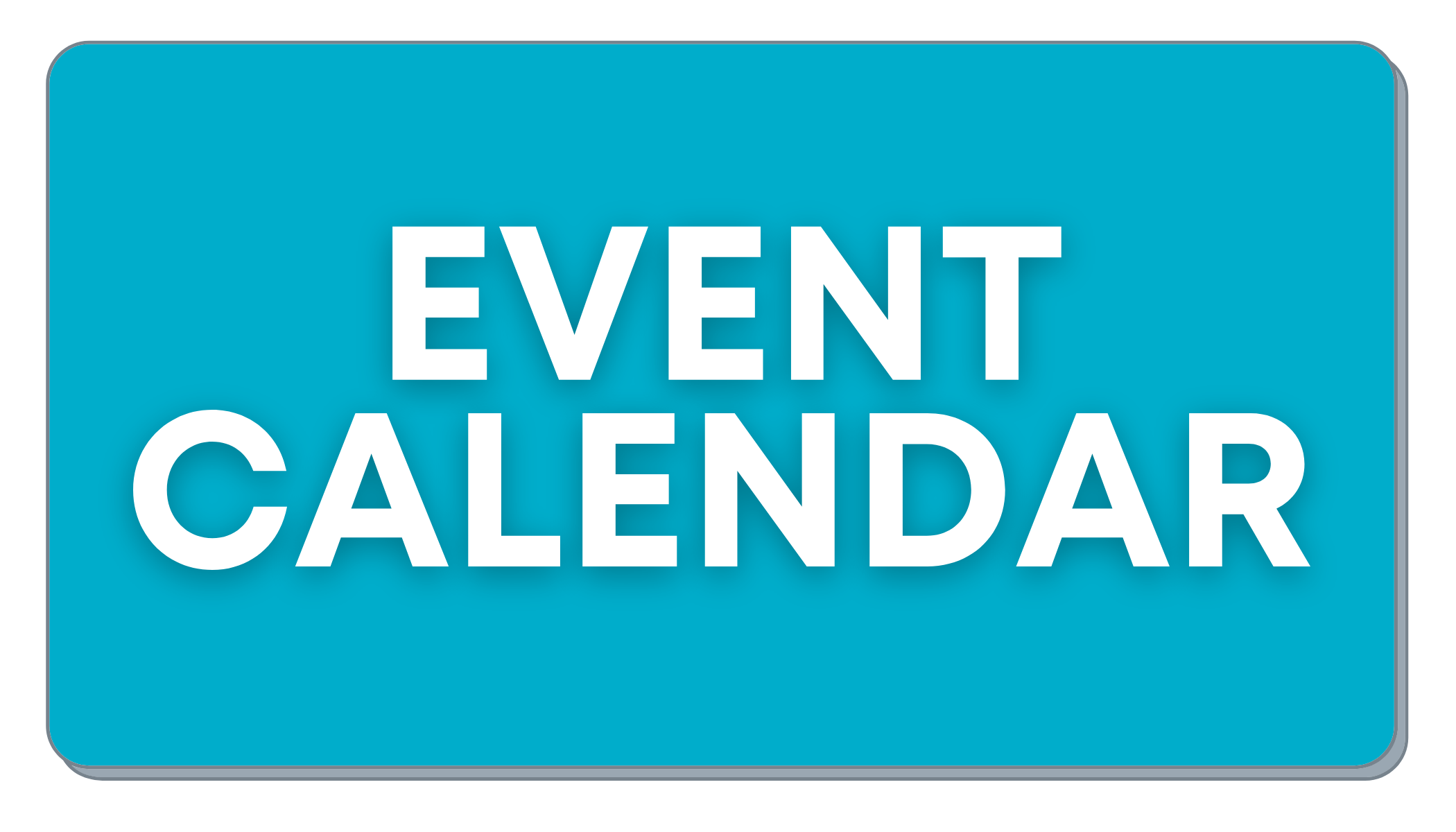 |  |

